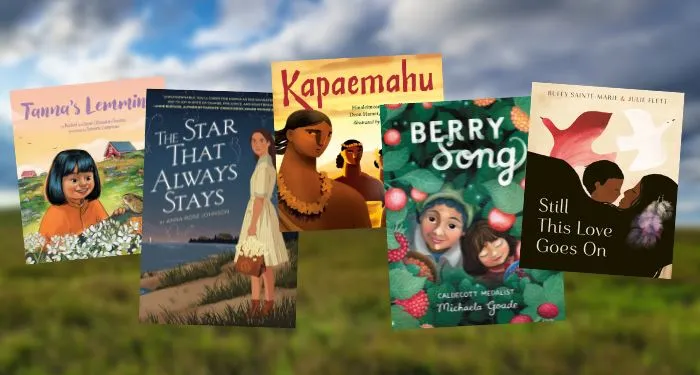
10 New Children’s Books by Native American & Indigenous Authors To Read For Native American Heritage Month
November is Native American Heritage Month, the perfect time to stock up on children’s books by Native American and Indigenous authors and to support Native American and Indigenous authors by buying, reading, and recommending their books, though to be clear, it’s always a good time to be reading children’s books by Native American and Indigenous authors.
It is also so important to make sure the books you’re reading to kids with Native American characters are written by Native American authors. Too often, children’s books by non-Native and Indigenous authors depict stereotypes about Native and Indigenous cultures or suggest that Native and Indigenous culture is a thing of the past, not a living, breathing, growing present reality. If you’re looking for some resources or further reading, I highly recommend checking out Heartdrum, a HarperCollins imprint dedicated to Native American authors and curated by award-winning Native American author Cynthia Leitich Smith. Inhabit Media is an excellent Inuit-owned independent publisher that publishes children’s books by Indigenous Canadians. Dr. Debbie Reese runs the American Indians in Children’s Literature blog and it is an essential resource for librarians and educators.
This year has seen a lot of excellent children’s books by Native American and Indigenous authors published, from a new gorgeous intergenerational picture book by Caldecott winner Michaela Goade to fun new early chapter books and historical middle grades that read like classics in the making. Even when authors set these books in the past, they make it clear how these historical realities tie into the present.
10 New Children’s Books by Native American & Indigenous Authors
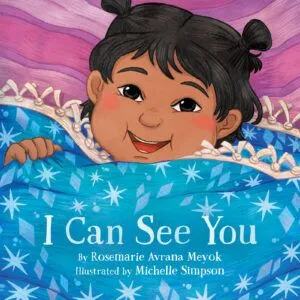
I Can See You by Rosemarie Avrana Meyok, Illustrated by Michelle Simpson
This sweet board book celebrates the love between a mother and her child using the five senses. From playing peek-a-boo to snuggles and kisses, the mothers and babies in this board book relish in the love they have for one another. The adorable illustrations contain aspects of Inuit culture. This would make a perfect gift for new mothers.
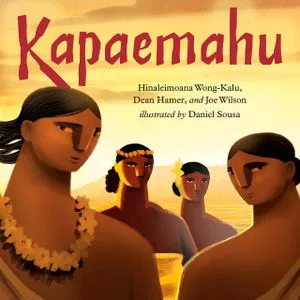
Kapaemahu by Hinaleimoana Wong-Kalu, Joe Wilson, and Dean Hamer, Illustrated by Daniel Sousa
This stunningly illustrated picture book retells the Indigenous Hawaiian legend about four mythic figures who are mahu — contain both male and female spirits — bringing the healing arts to Hawaii. In appreciation, Native Hawaiians gift four boulders in their honor, and the Mahu imbue the boulders with magical healing properties. After Hawaii’s colonization by white foreigners, the meaning of the boulders is forgotten until the 1960s. Written in both English and Olelo Niihau, this picture book is based on an award-winning film of the same name.
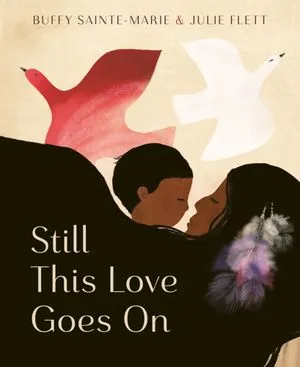
Still This Love Goes On by Buffy Sainte-Marie, Illustrated by Julie Flett
Indigenous Cree musician Buffy Sainte-Marie’s lyrics to the song of the same name are beautifully illustrated by Cree-Métis illustrator Julie Flett in this new picture book. Both the lyrical prose and the warm, seasonal illustrations celebrate Indigenous traditions of honoring nature and community. This is a perfect author/illustrator team-up, and the backmatter includes sheet music to the song as well as notes from Sainte-Marie and Flett describing their inspirations for the lyrics and illustrations.
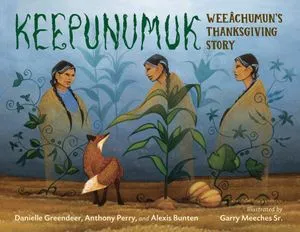
Keepunumuk: Weeâchumun’s Thanksgiving Story by Danielle Greendeer, Anthony Perry, and Alexis Bunten, Illustrated by Gary Meeches Sr.
This is a must-read picture book about Thanksgiving from a Native American perspective. A Mashpee Wampanoag grandmother tells her two grandchildren about how their ancestors aided the Pilgrims by honoring and harvesting the three sisters corn, bean, and squash. During a three-day celebratory meal to welcome the newcomers, the Wampanoags taught the Pilgrims how to harvest and care for the three sisters. This picture book includes a pronunciation guide and more details about the Wampanoag’s beliefs in ancestor spirits. I highly recommend replacing any Thanksgiving children’s books by white authors with this one.
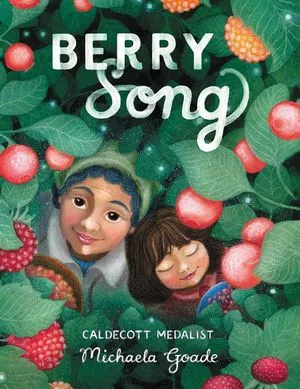
Berry Song by Michaela Goade
Tlingit and Haida author/illustrator Michaela Goade won the 2021 Caldecott Medal for her illustrations in We Are Water Protectors, and her illustrations in Berry Song are just as gorgeous. This latest picture book joyfully honors the special relationship between a grandmother and grandchild, the changing seasons, and the richness of the land by providing food. Grandmother and granddaughter sing to the land in gratitude as they collect berries, fish, and herring eggs, and the land sings back. The sing-song lyrics make this such a great read aloud. It will definitely be one of my favorite picture books of the year.
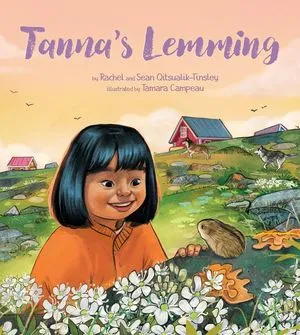
Tanna’s Lemming by Rachel Qitsualik-Tinsley and Sean Qitsualik-Tinsley, Illustrated by Tamara Campeau
This sweet picture book tells a nuanced story about what it means to care for nature. Tanna is collecting lemmings for a researcher to study when she finds a tiny one under a rock. Instead of giving the lemming to the researcher, she keeps this one as a pet. Tanna knows that she understands how to treat the lemming far better than any outsider researcher could. She calls the lemming Fluffi, and at first, Fluffi fits in perfectly in Tanna’s home. But when Fluffi eats her mother’s fabric, Tanna begins to realize a more complicated truth — that sometimes to truly care for a living thing means setting it free. This follow-up to Tanna’s Owl is based on the author’s experiences growing up in the Artic.
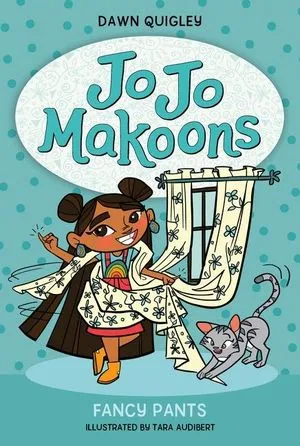
Jo Jo Makoons: Fancy Pants by Dawn Quigley, Illustrated by Tara Audibert
This second book in an early chapter book series features Ojibwe first-grader Jo Jo Makoons on her quest to get fancy in time for her aunt’s wedding. As she searches around the reservation for fancy clothing ideas, she gets into many humorous hijinks and misunderstandings. This series is so cute and funny, and each book can be read as a standalone. The author includes Ojibwe & Michef words throughout with a glossary in the back.
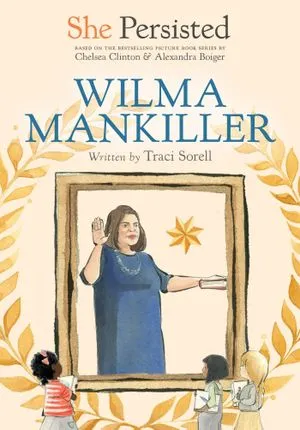
She Persisted: Wilma Mankiller by Traci Sorell
Cherokee author Traci Sorell adds to the She Persisted series edited by Chelsea Clinton with this early chapter book biography of Wilma Mankiller — the first female Principal Chief of the Cherokee Nation. The biography begins with Wilma Mankiller’s birth and her childhood in Oklahoma, though it also discusses how her ancestors came to live in Oklahoma and the historical removal of the Cherokee by white colonizers. It’s a thorough but accessible biography that presents Wilma Mankiller’s life within its historical context, accompanied by black-and-white illustrations by Alexandra Boiger and Gillian Flint.
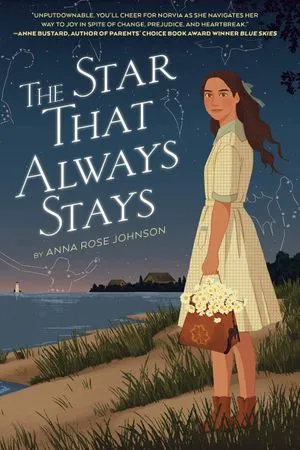
The Star That Always Stays by Anna Rose Johnson
The author bases this historical middle grade novel set in 1914 on her family’s history. Norvia grew up on Beaver Island listening to her grandfather’s Ojibwe stories. When her divorced mother remarries and moves to the city, she forces Norvia and her siblings to hide their Native ancestry and pretend to be white. While Norvia loves much about her new life — attending school, the books her stepfather gifts her — she doesn’t like hiding who she is, especially from her new stepsiblings. This enchanting quiet middle grade has lots of Anne of Green Gables vibes, but from an Indigenous American perspective and with more modern sensibilities.
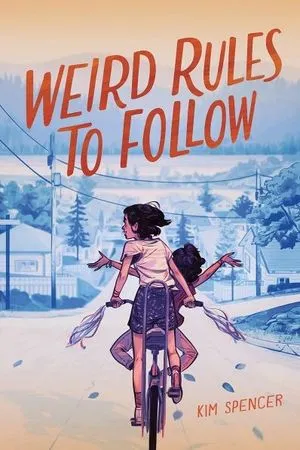
Weird Rules to Follow by Kim Spencer
This historical middle grade told in vignettes takes place in Prince Rupert, British Columbia, in 1985. Mia and Lara have been best friends forever, but once they hit their pre-teens, Mia — who is Indigenous — begins noticing the differences between how she a Lara — who is white — are treated. For instance, when Lara and her brother’s bike are stolen, Lara’s father blames “the Indians.” Lara says nothing to correct him or defend her best friend. Mia also begins to notice the differences in wealth between her and Lara. Lara lives in a big nice house and her parents both own cars, while Mia lives in an old, derelict home packed with her family. The older Mia gets, the farther she and Lara drift. This is a lovely middle grade that explores racial and class dynamics. The author, of the Ts’msyen (Tsimshian) Nation, bases the novel on her childhood experiences.
For more Native American children’s books, check out this list of Native American children’s books about culture and tradition and this one dedicated to Native American picture books.











